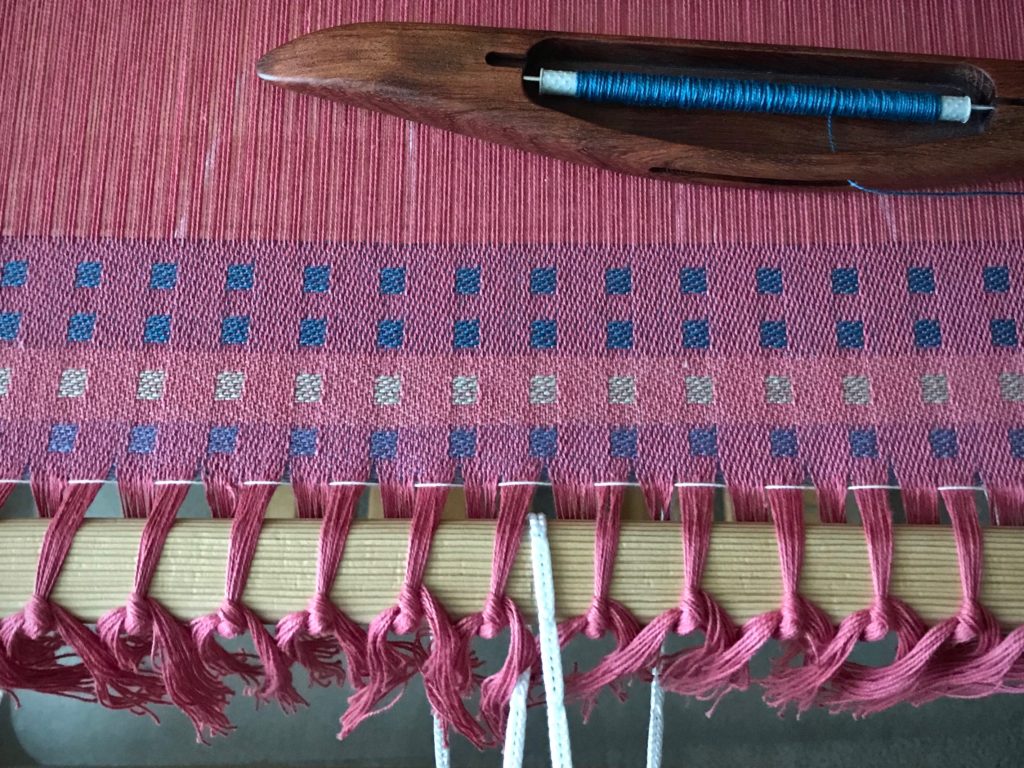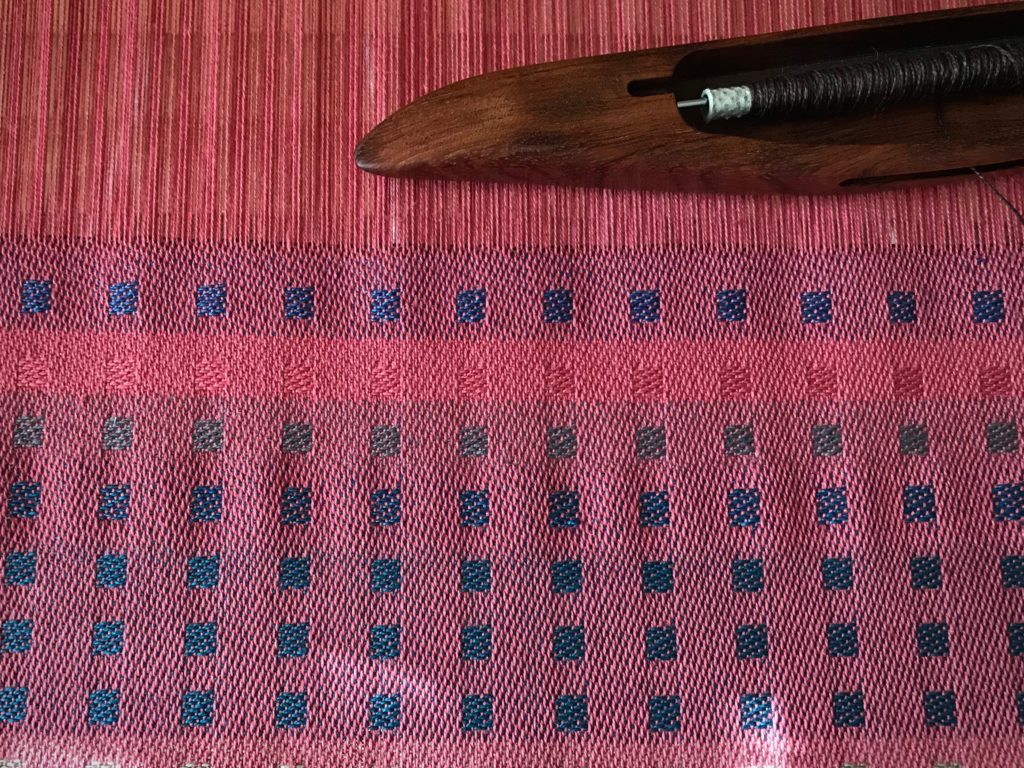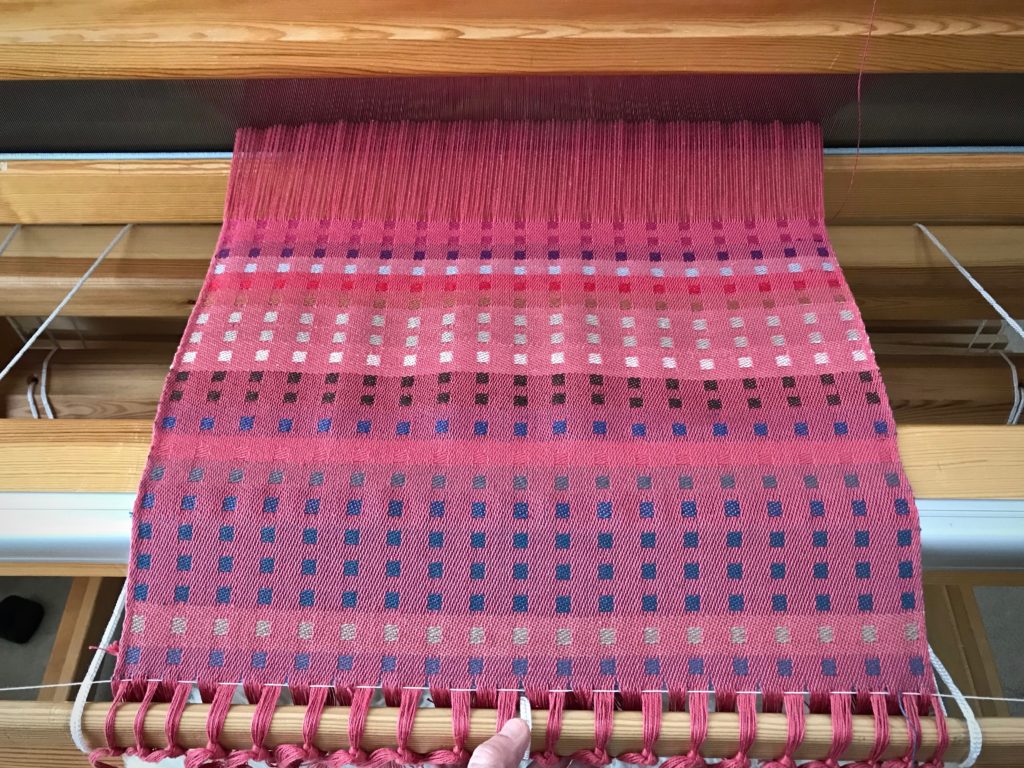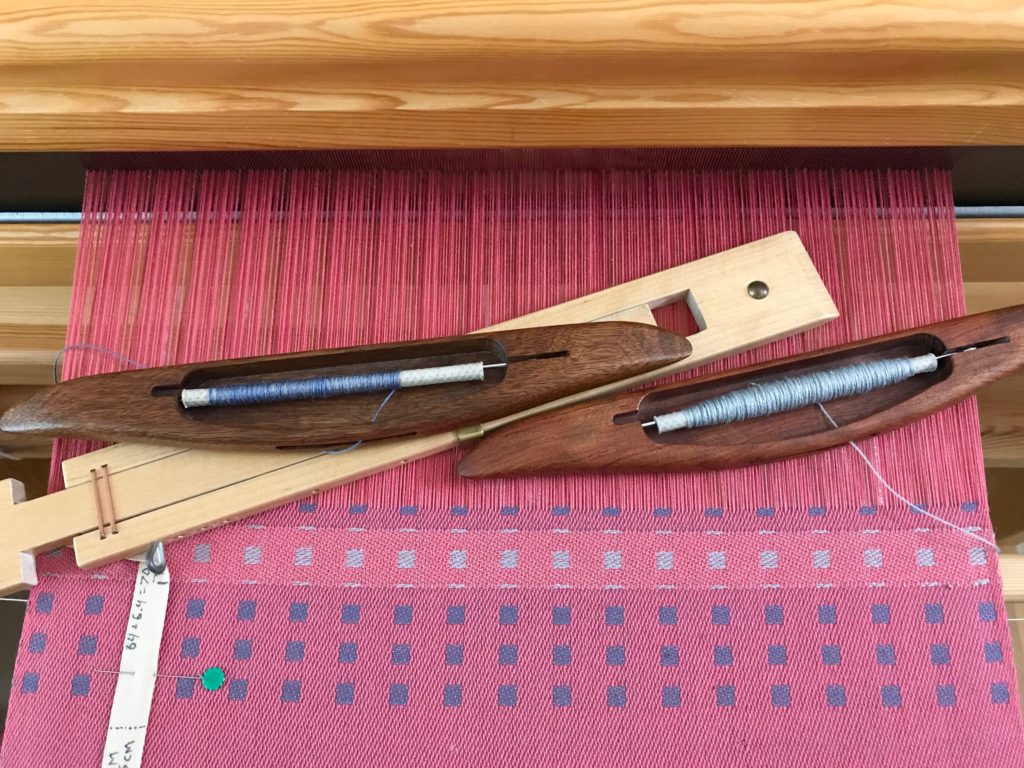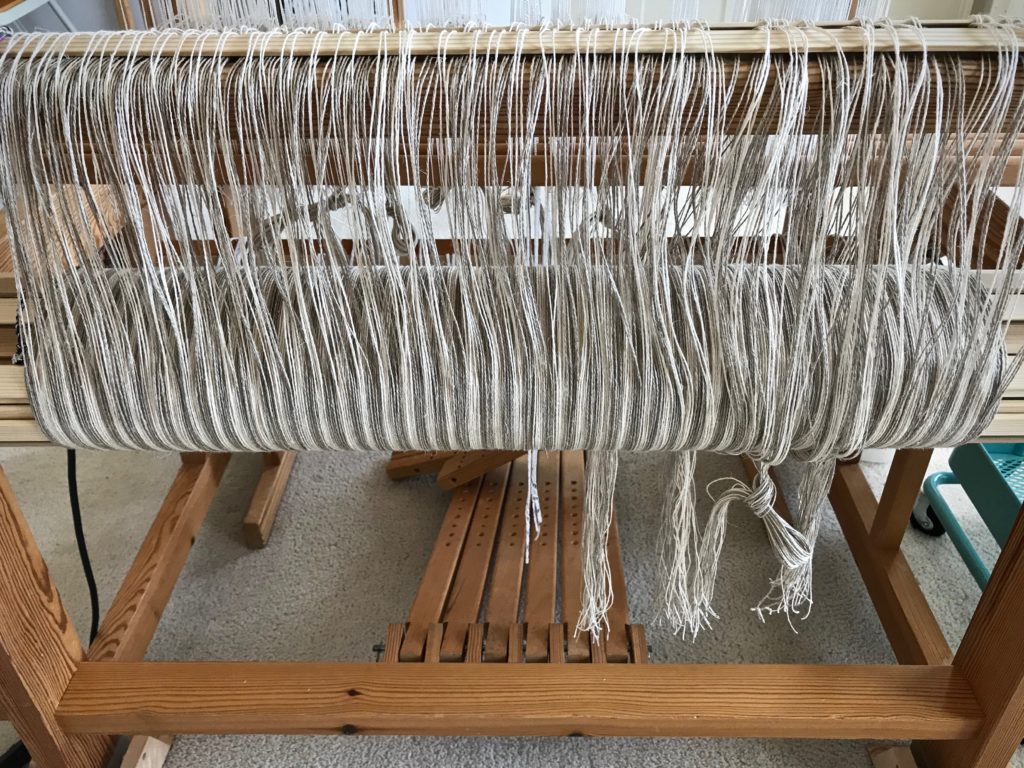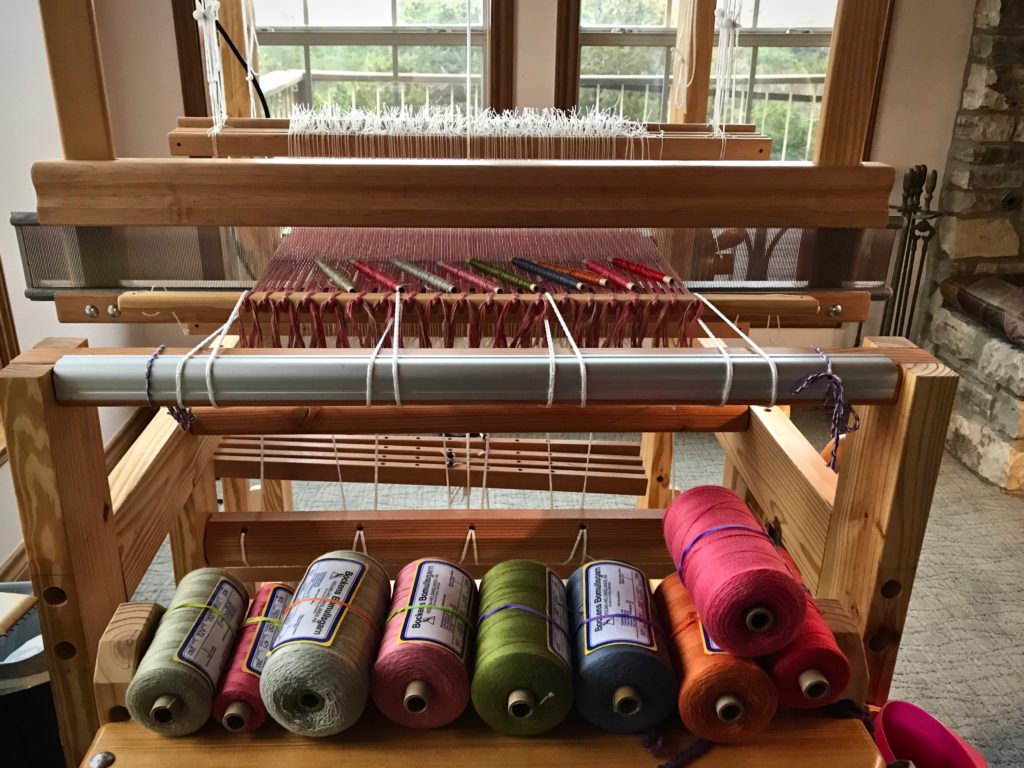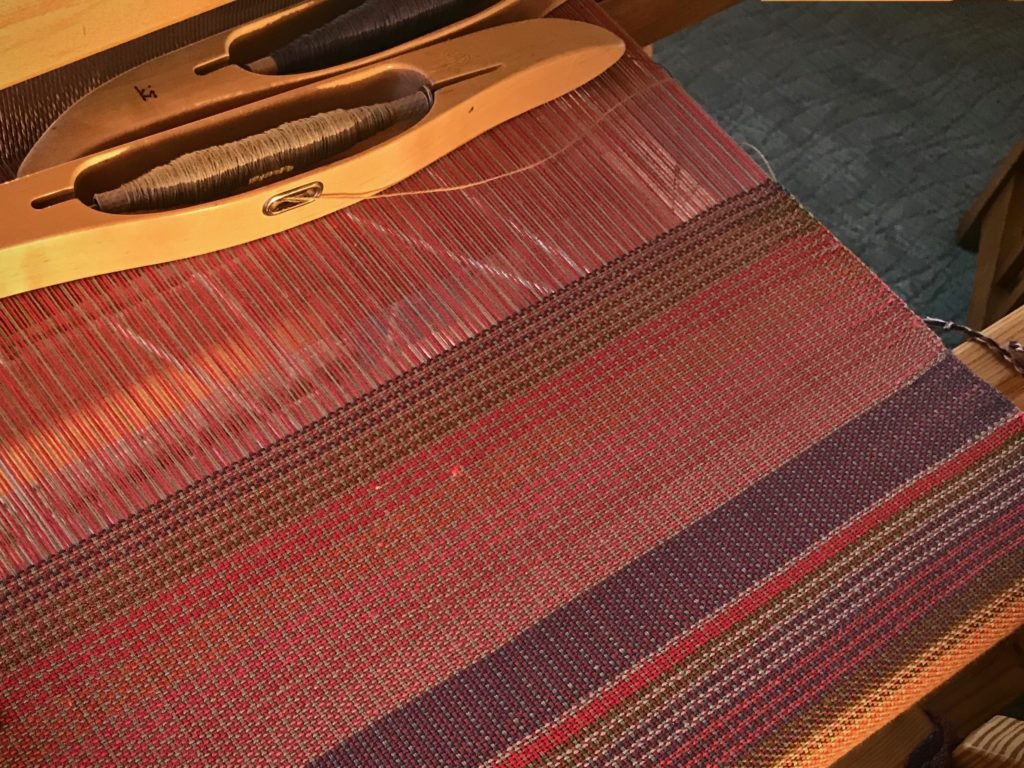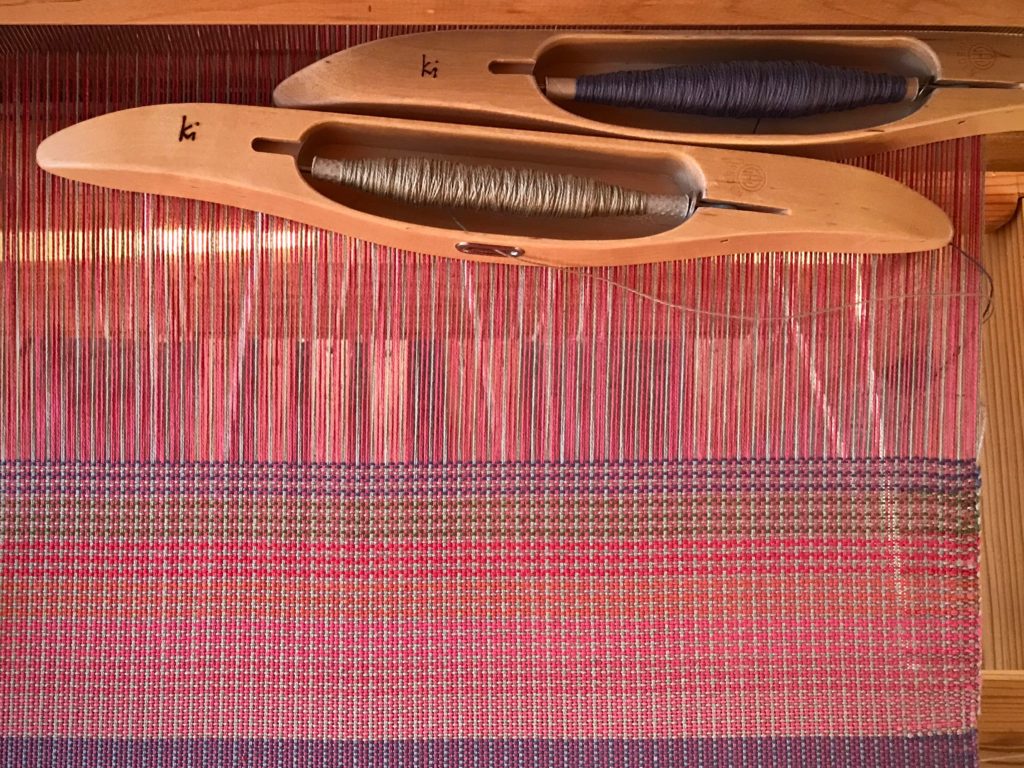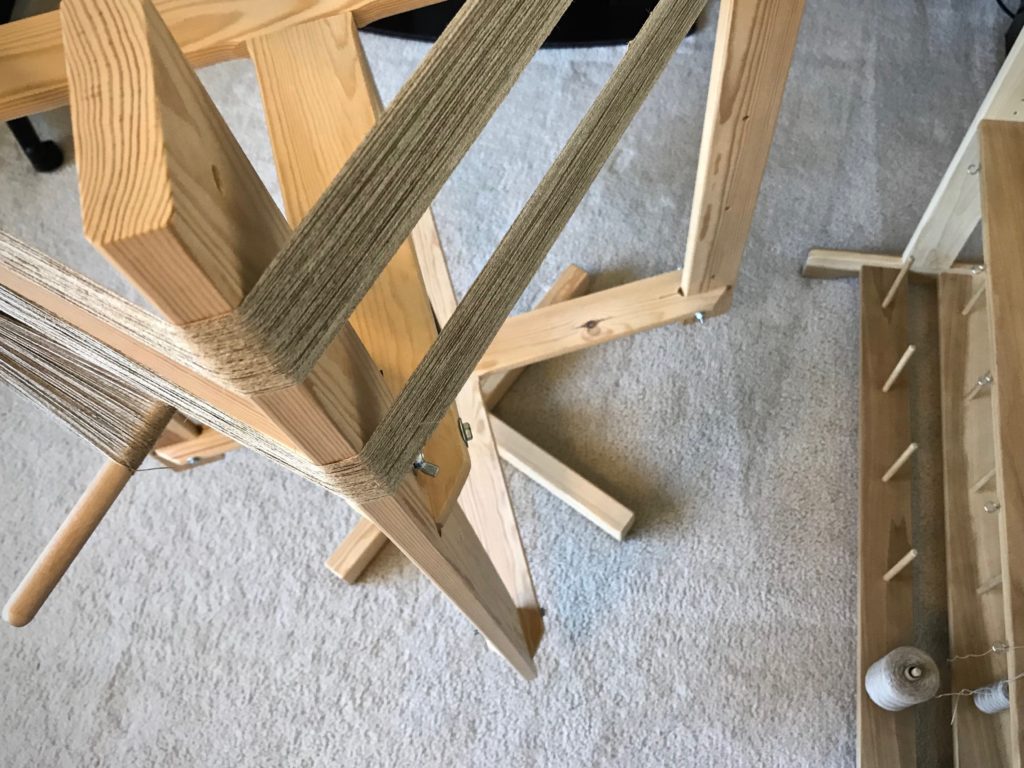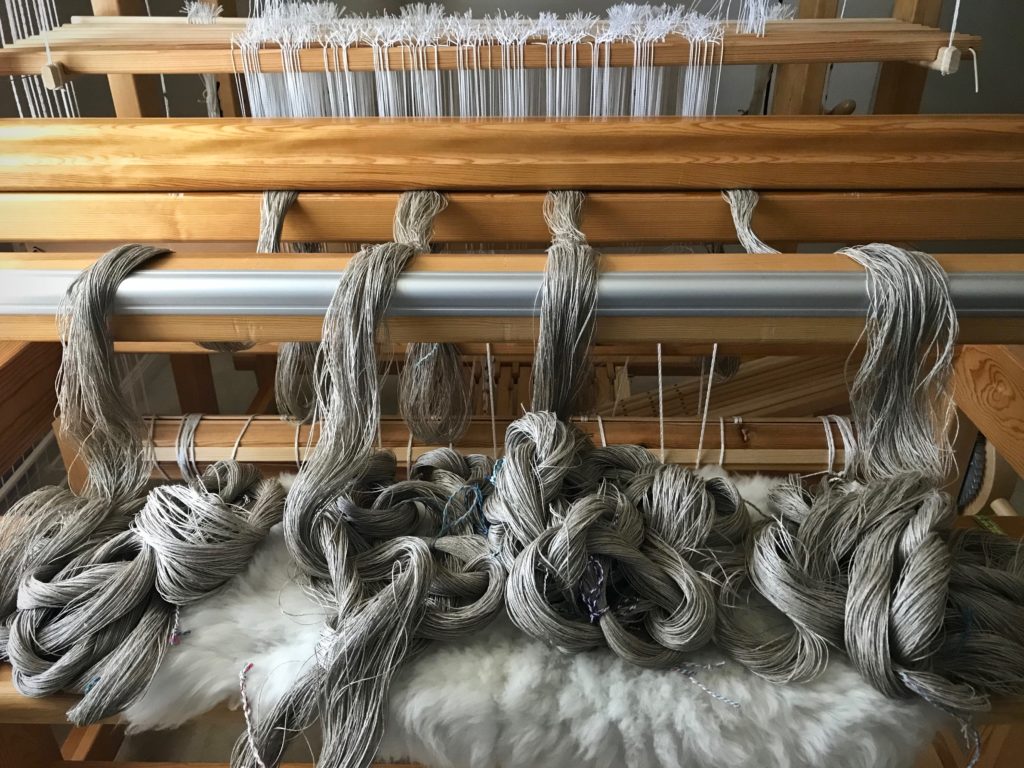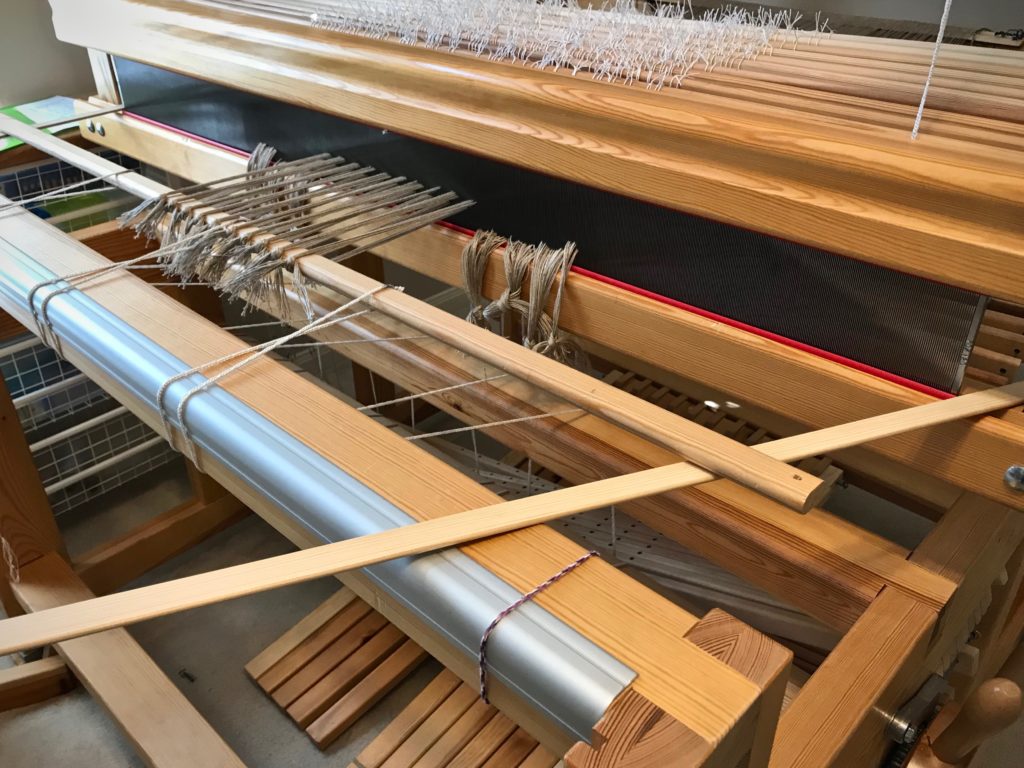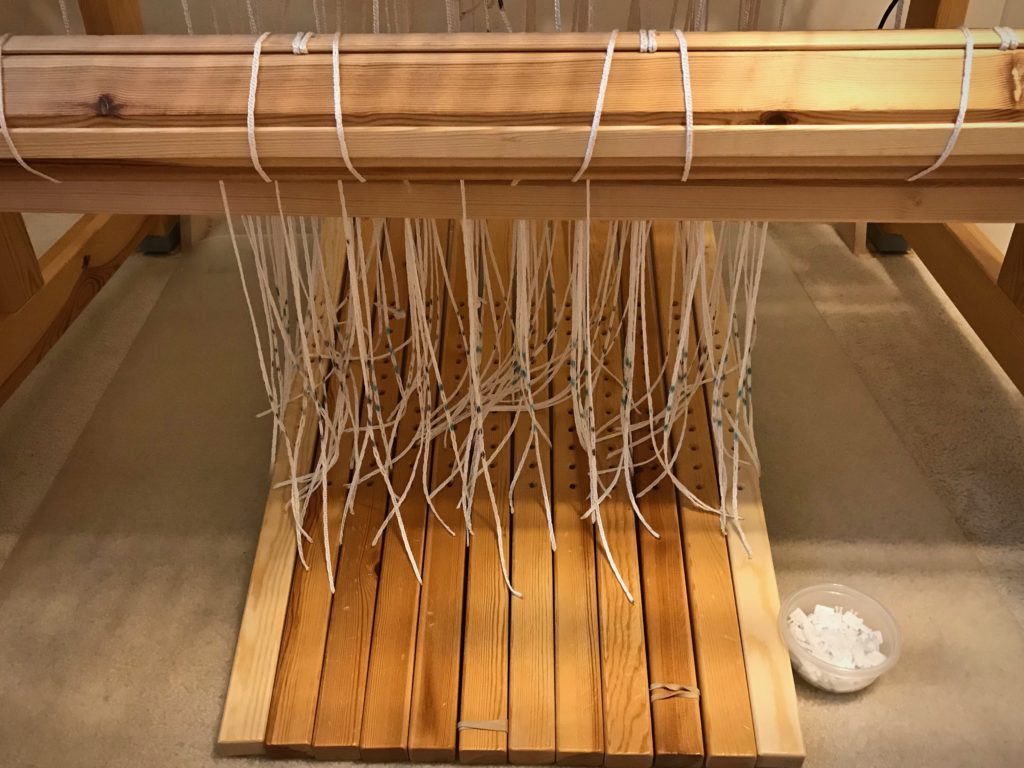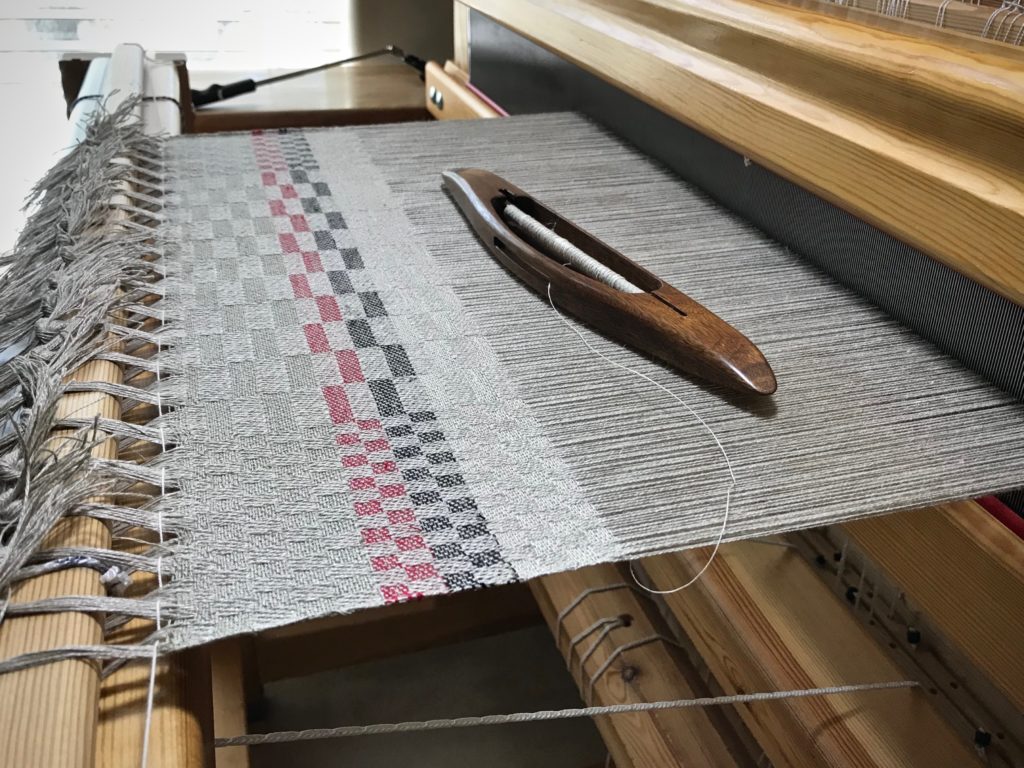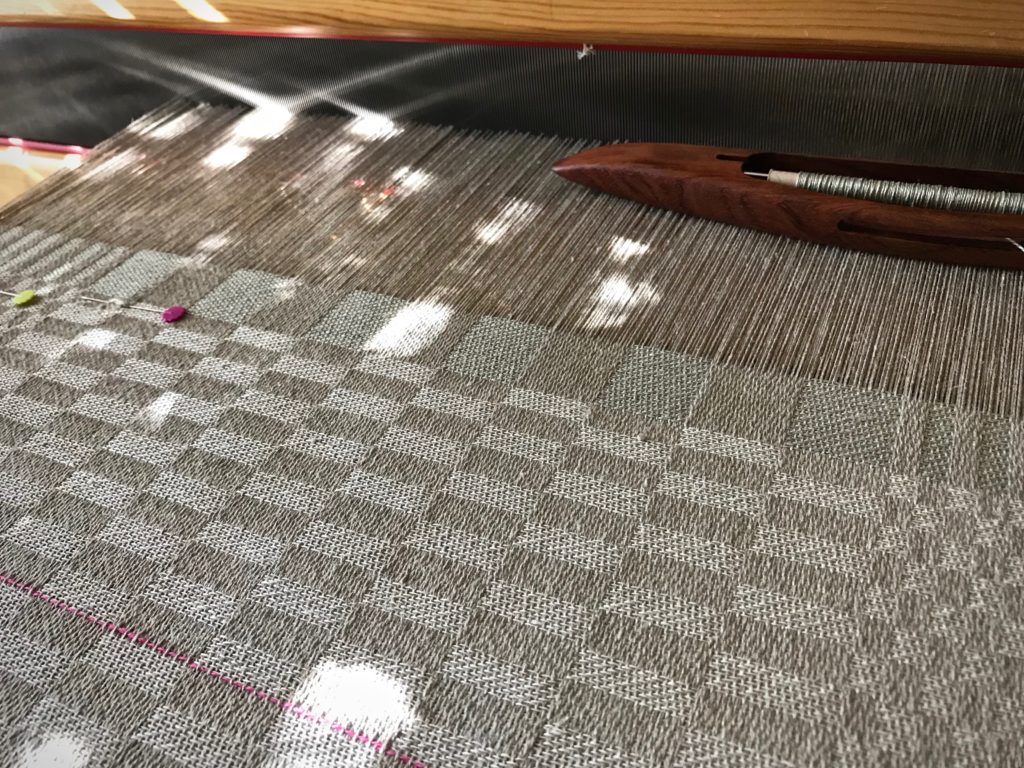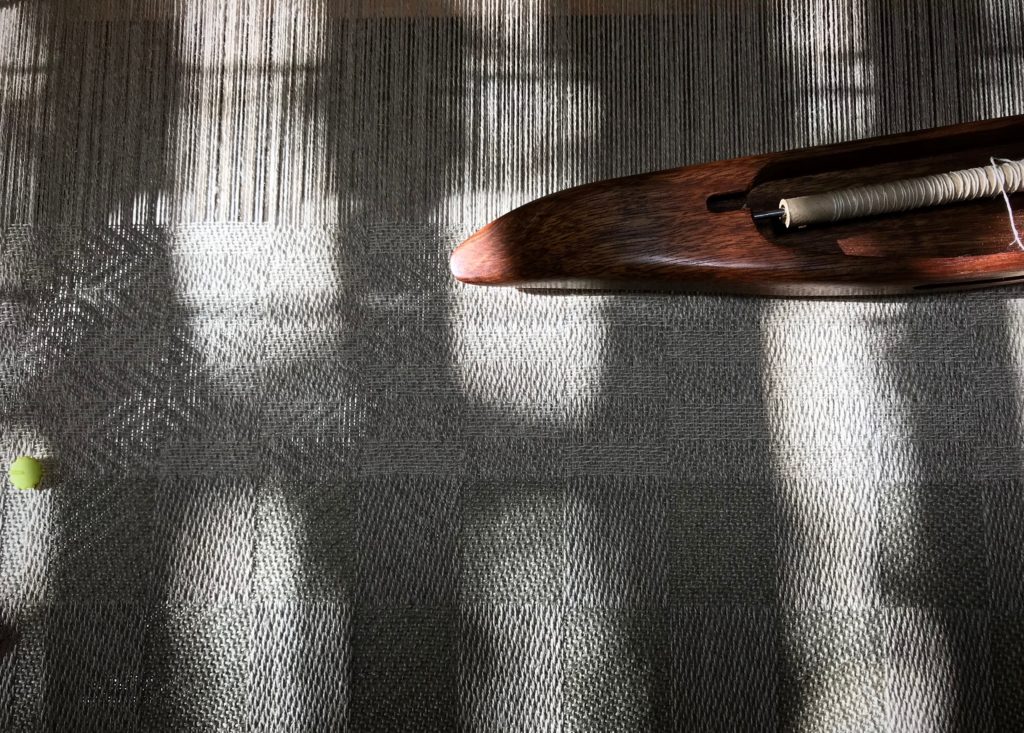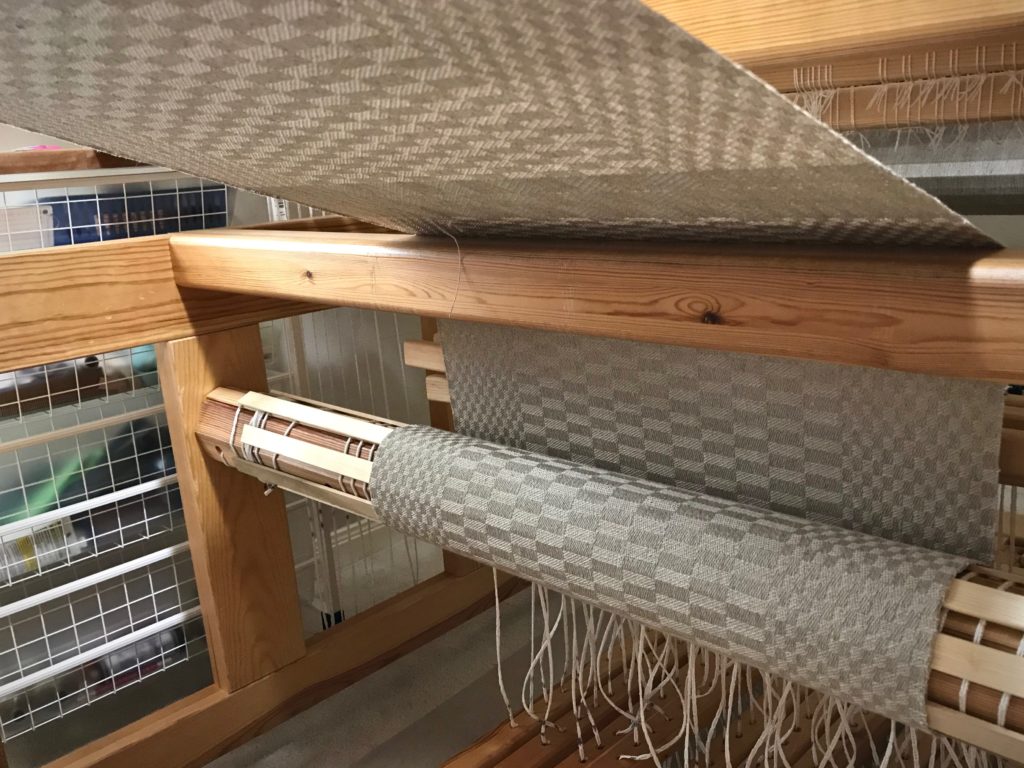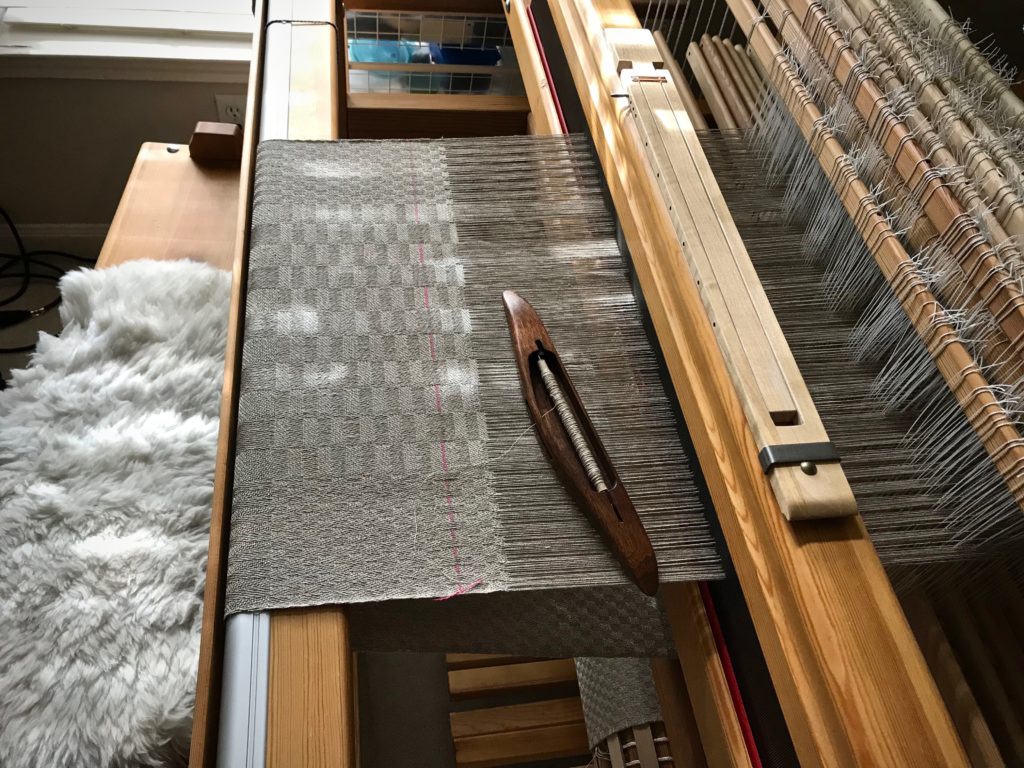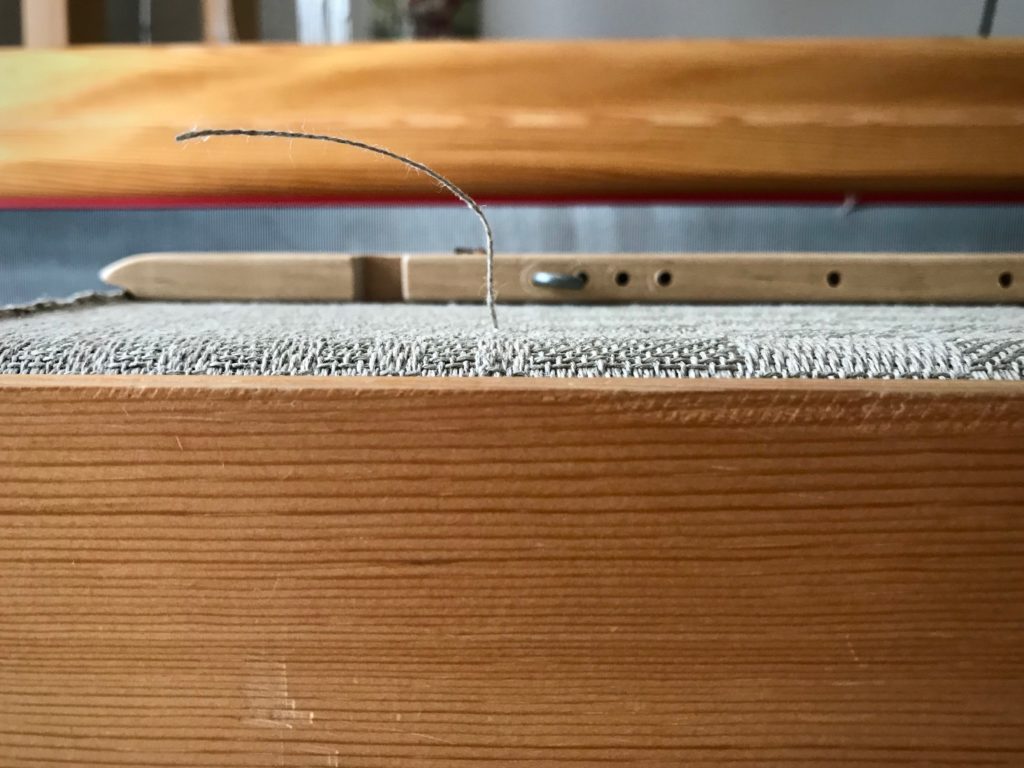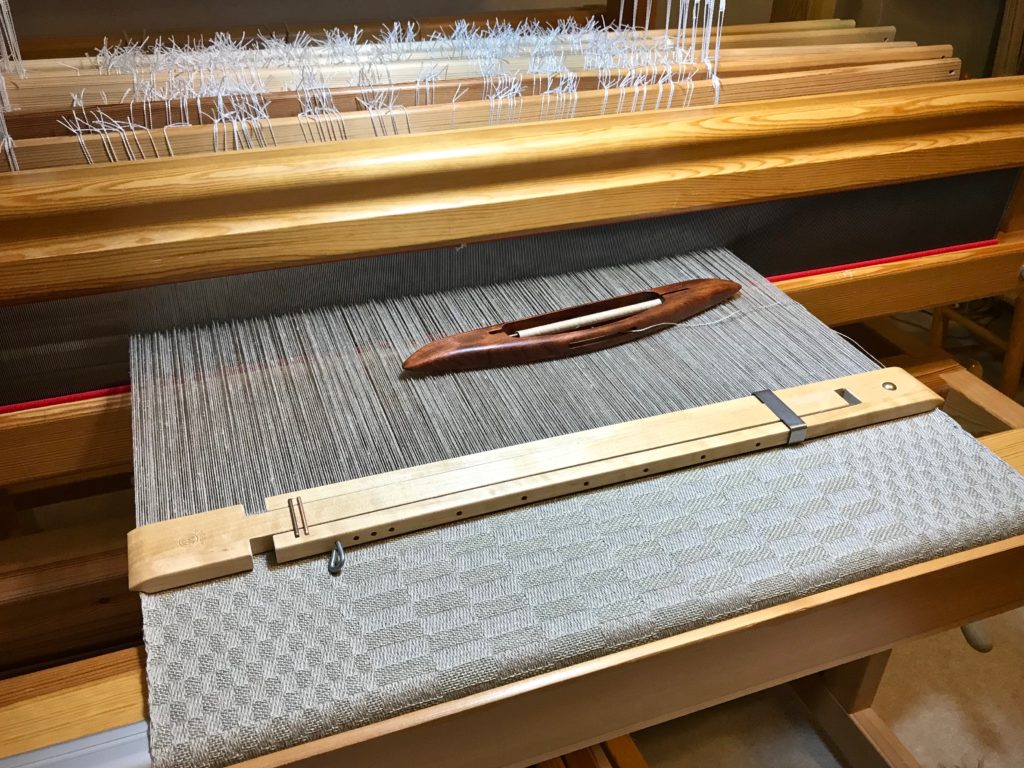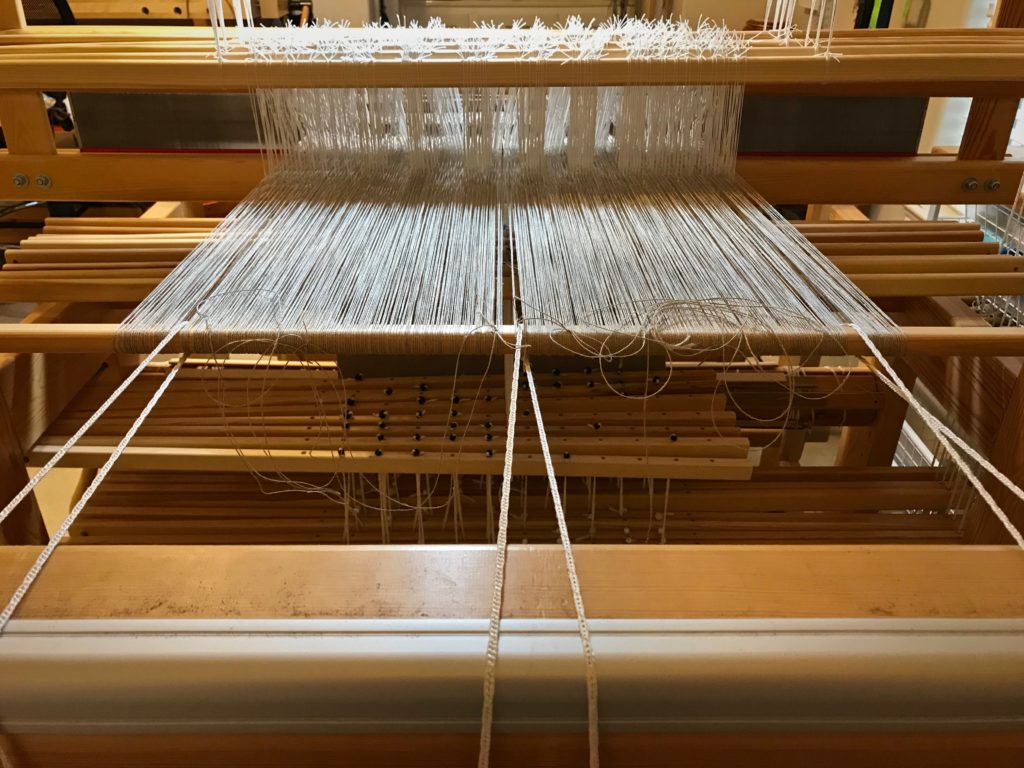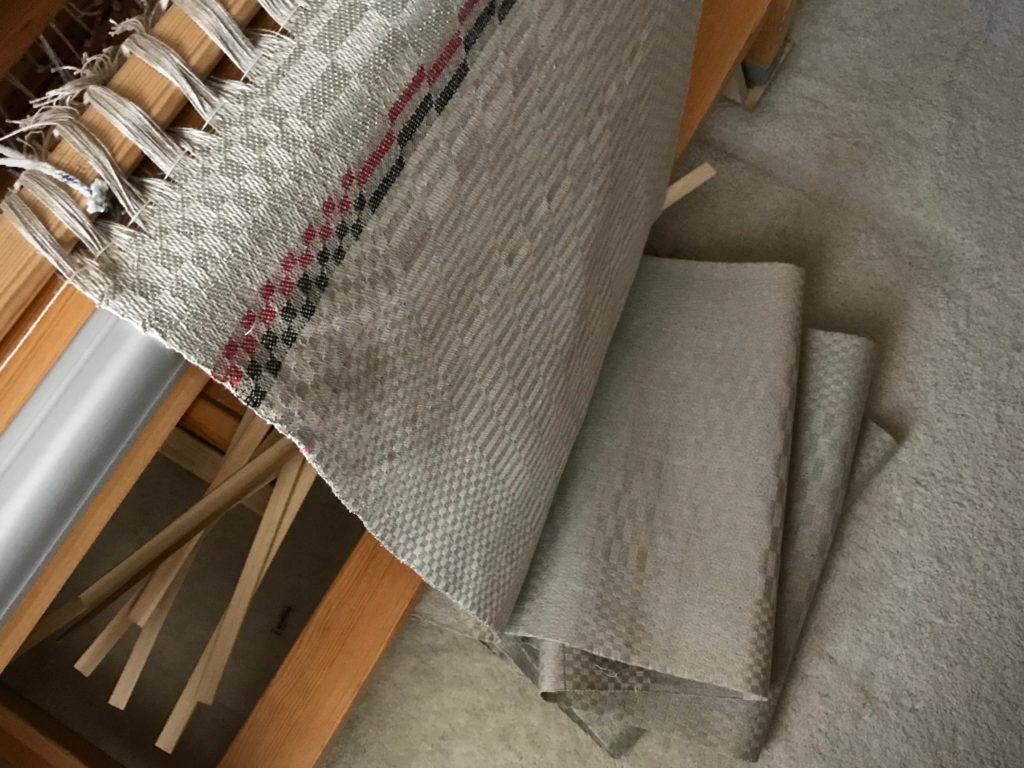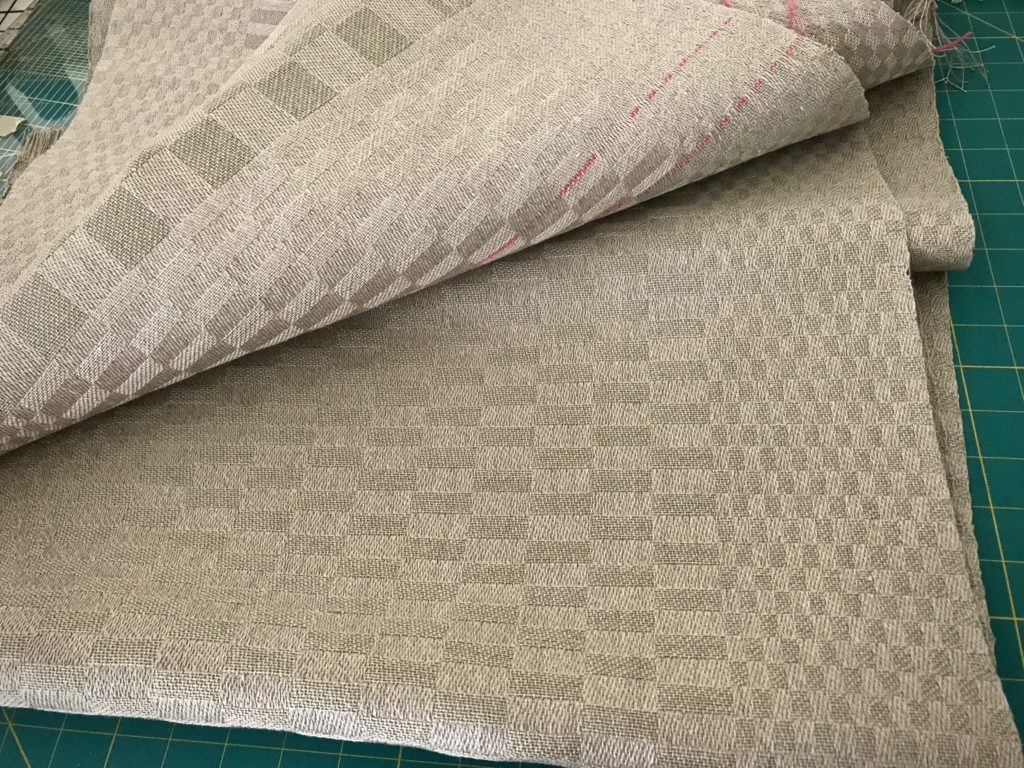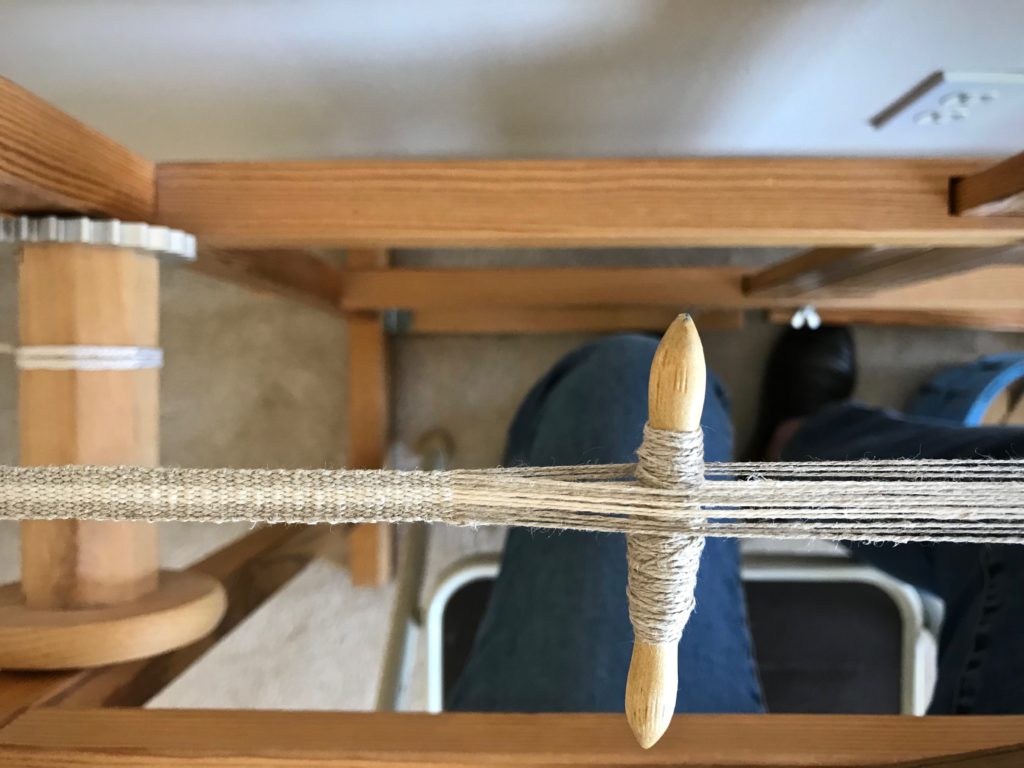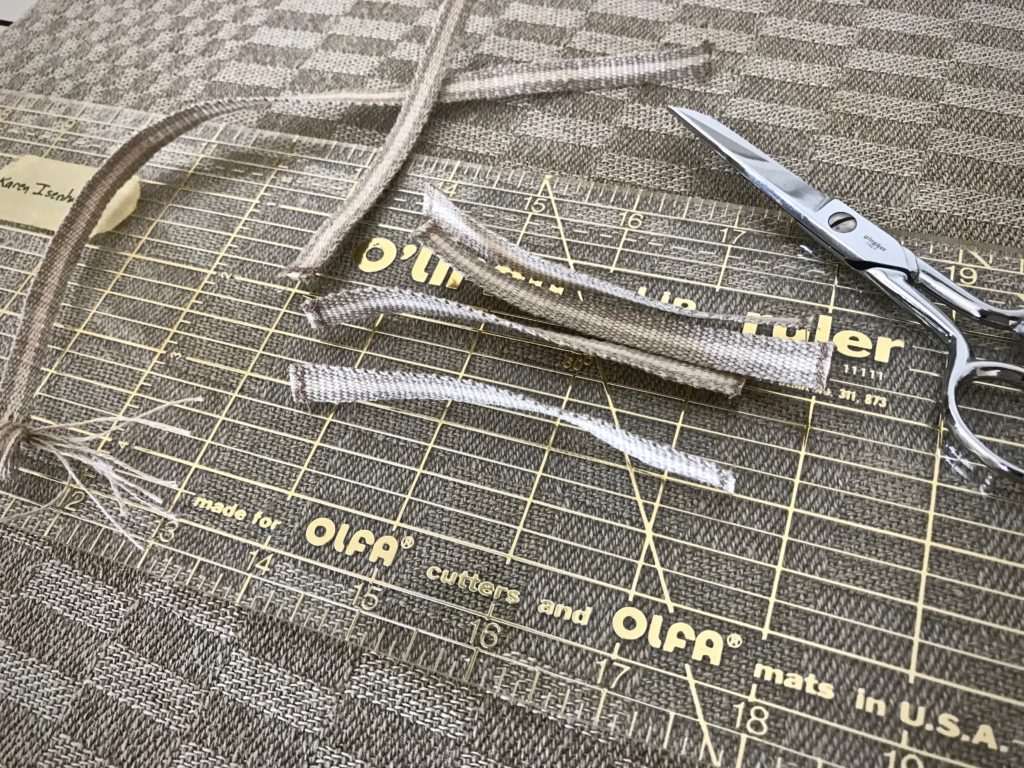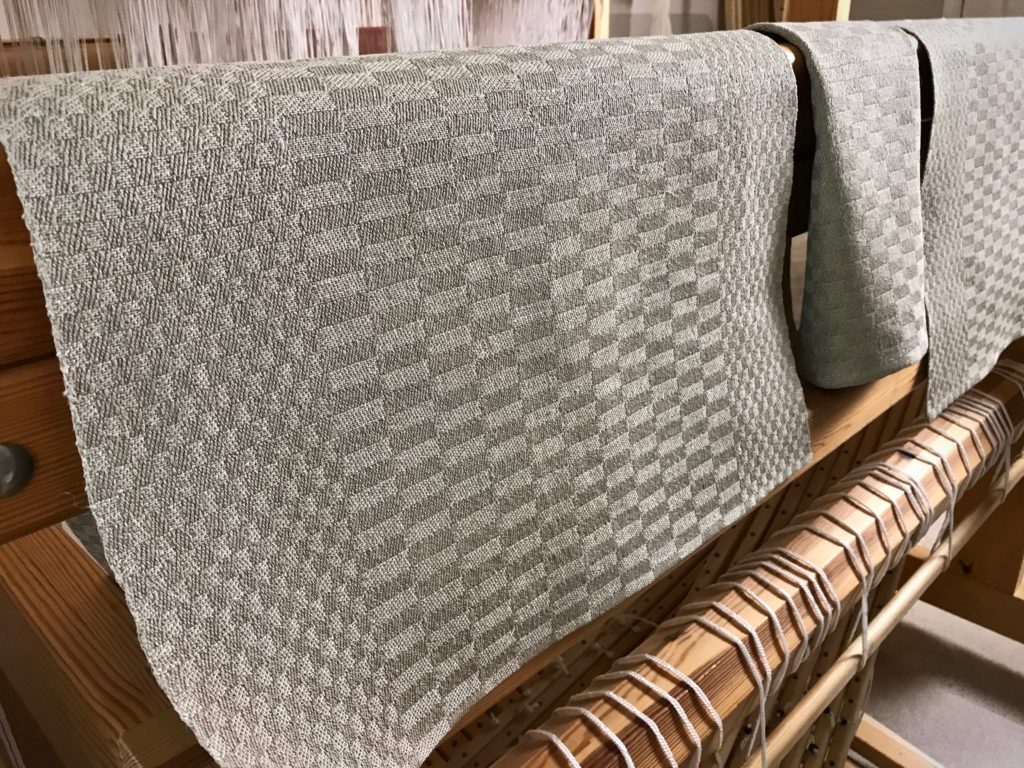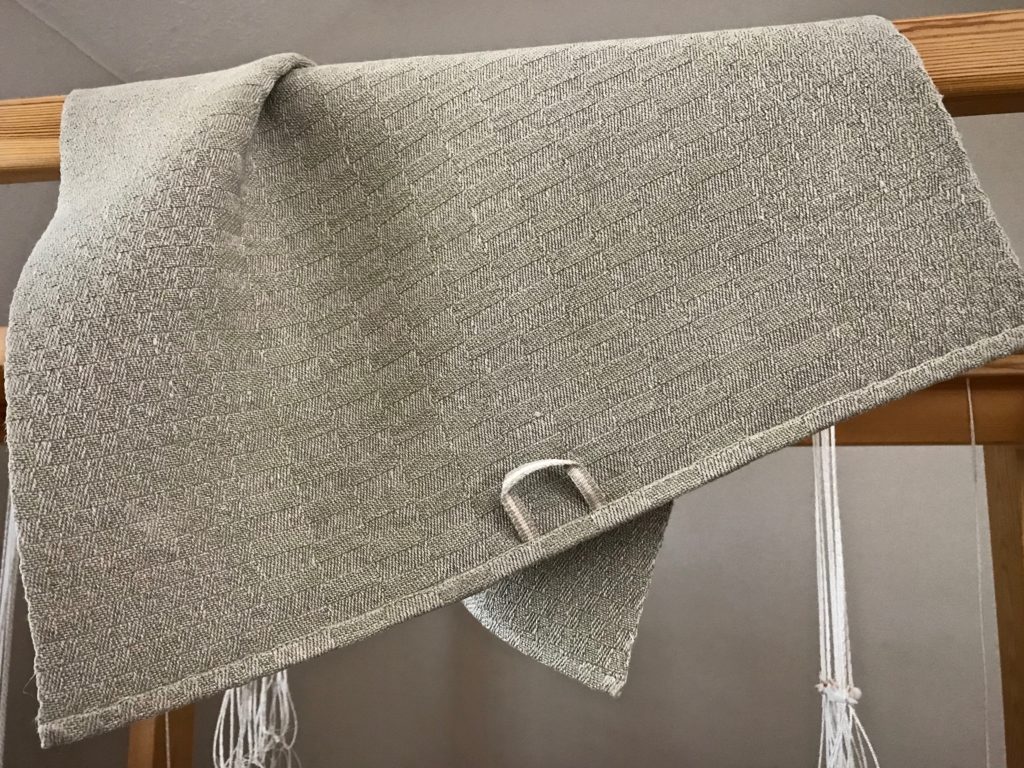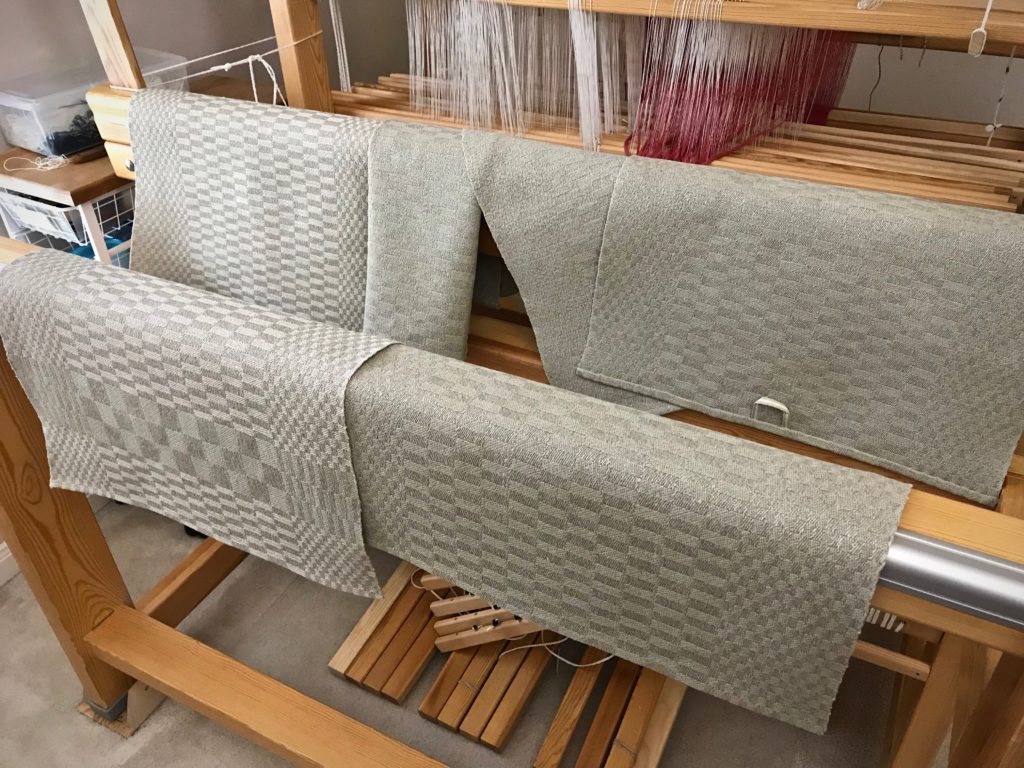Sometimes things do not go as you hope or expect. I thought this color-and-weave effect would be more distinct. Yes, I chose low-contrast colors. I wanted the pattern to be subtle. But this may be too subtle. I have to use my imagination to see anything other than a faint checked pattern. It’s not a complaint. It’s just not how I thought it was supposed to be.
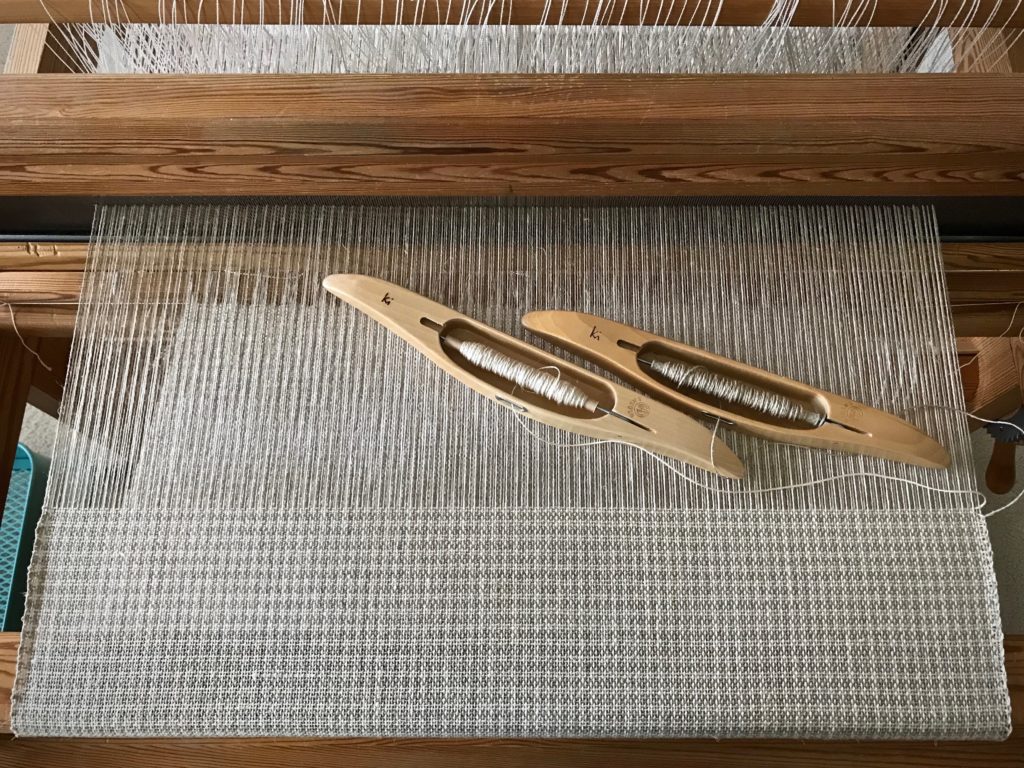
I am taking pictures from all different angles, thinking the camera lens might show more than I can see with my eye.
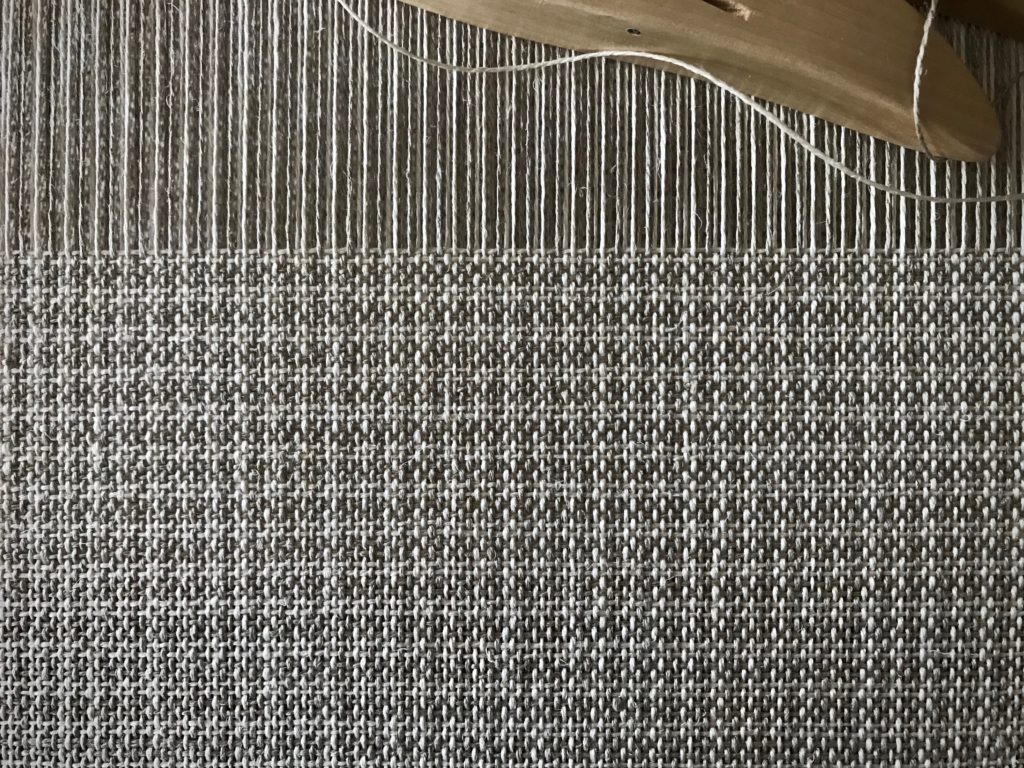
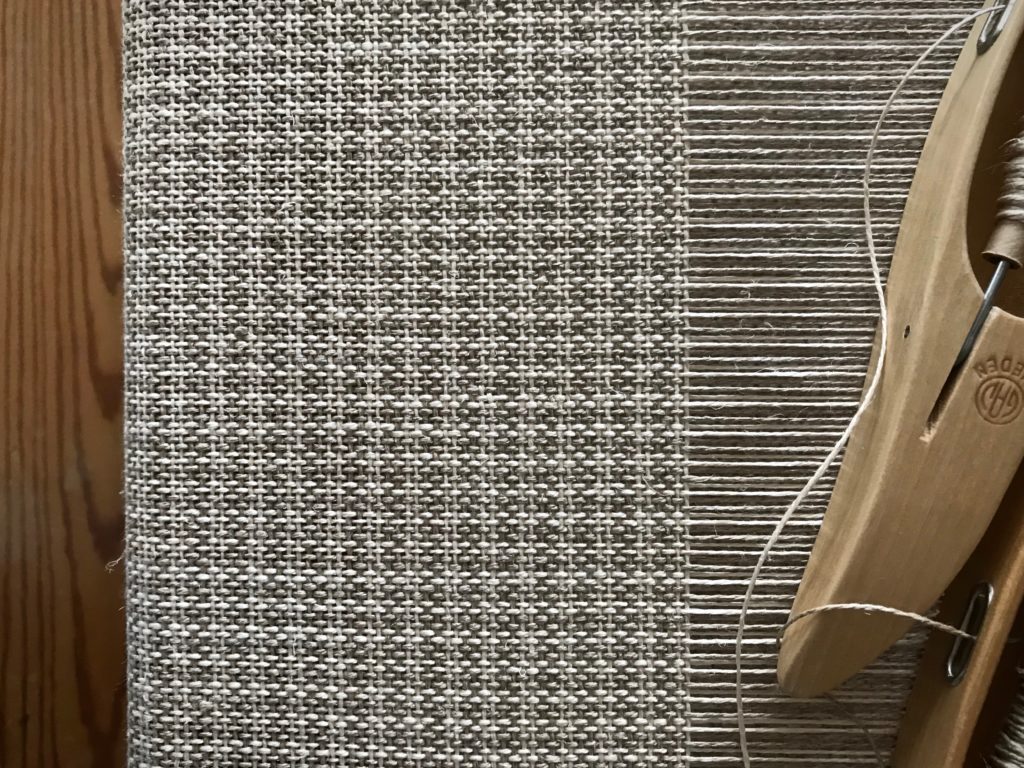
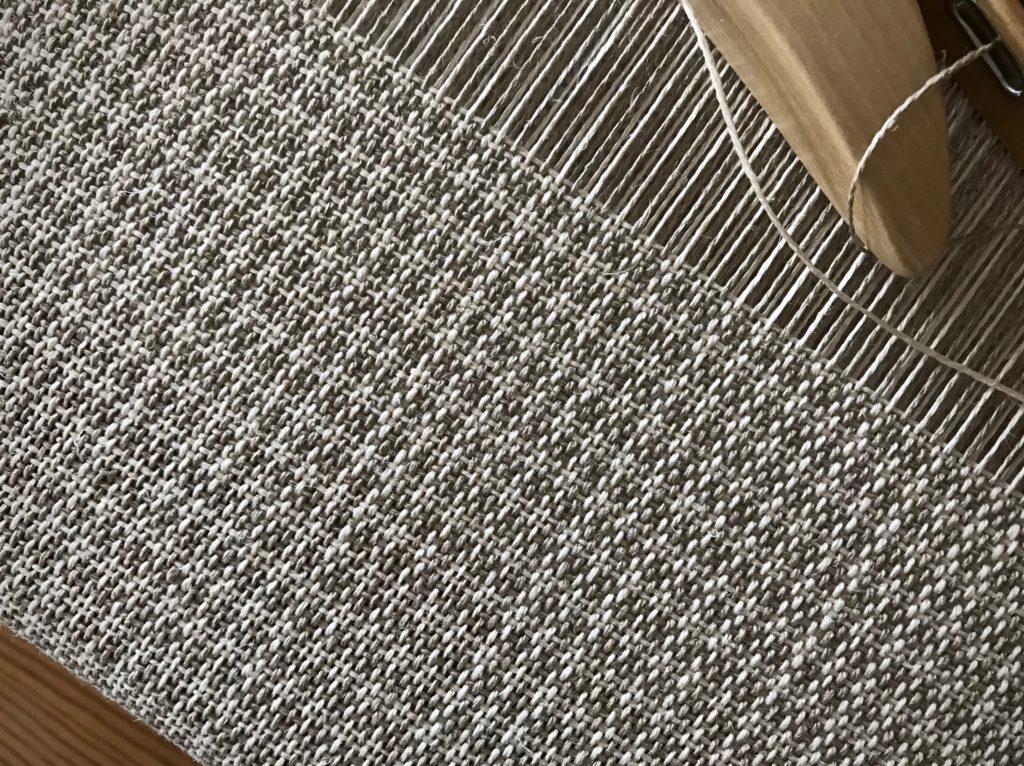
And, to my great surprise, there it is! The pattern I am hoping for shows up when I snap a photo of the underside. What happened? It’s all in the lighting. In this case, I need shadows to reveal the pattern in the weave.
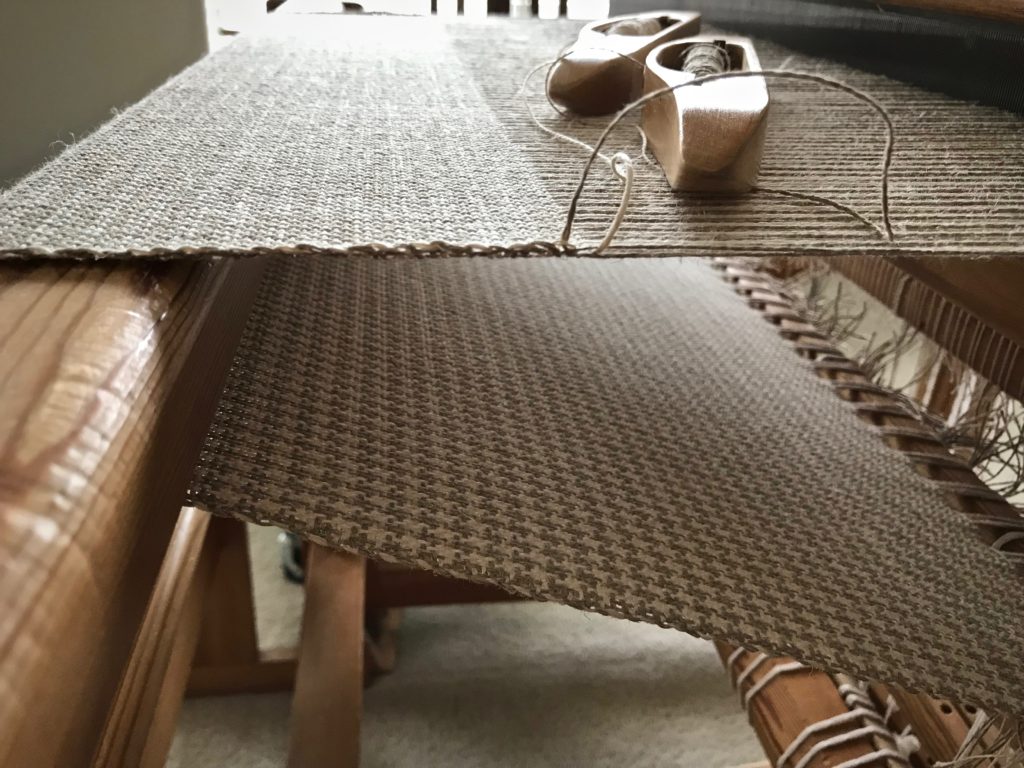
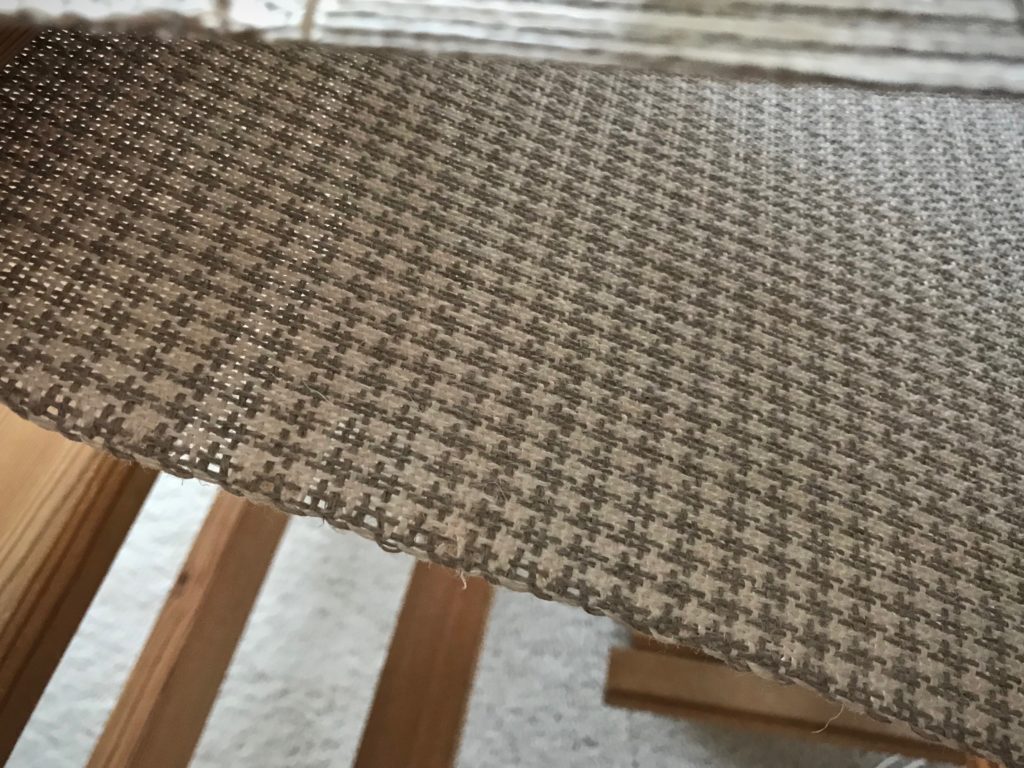
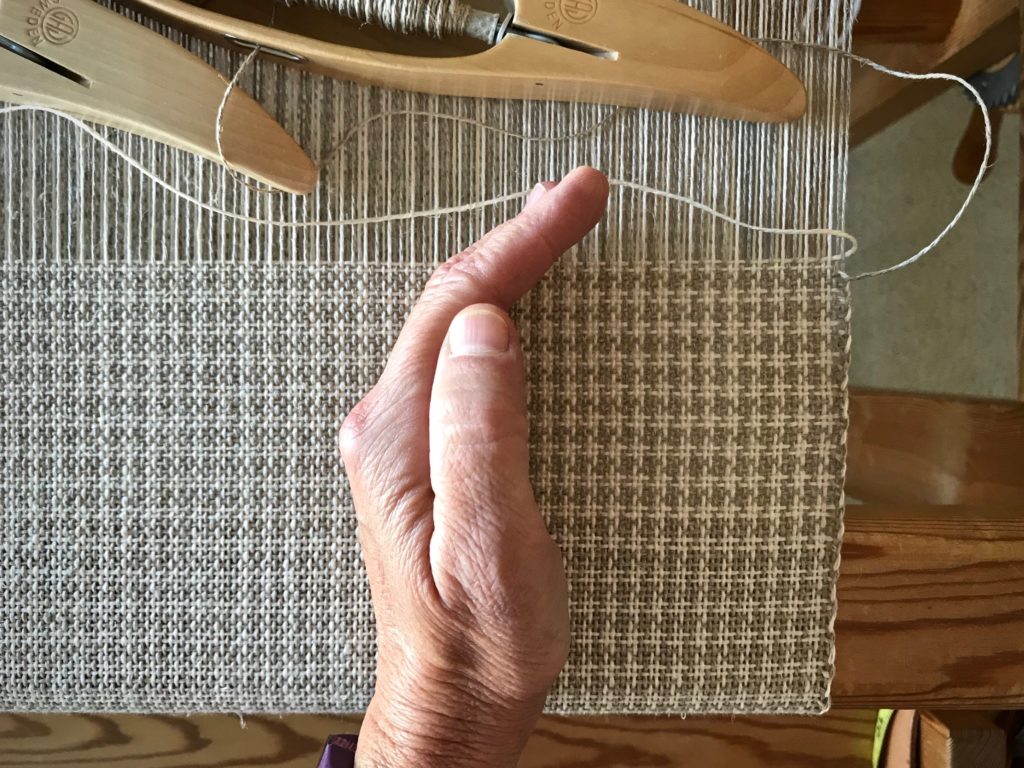
Endure. When you walk through shadows of life, the patterns that are woven in you become evident. If you depend on the Lord’s might to walk through and endure day-by-day challenges, that same power will be with you when you walk into a major shadow and need endurance the most. In fact, it is in that shadow that the image of Christ is most clearly seen in you.
With you,
Karen

